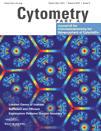|
Purpose:
|
Telomeres in Drosophila are composed of sequential non-LTR retrotransposons: HeTA,
TART, and TAHRE. Although they are repressed by the piRNA pathway in the
germline, how these retrotransposons are regulated in somatic cells is poorly
understood. Here, we show that specific splice variants of Mod(mdg4) repress HeT-A
by blocking subtelomeric enhancers in ovarian somatic cells. We found that the
Mod(mdg4)-N variant represses HeT-A expression most efficiently among the variants.
Mod(mdg4)-N mutant flies show elevated HeT-A expression and female sterility.
Mod(mdg4)-N-binding subtelomeric sequences exhibit enhancer-blocking activity, and
recruitment of RNA polymerase II (Pol II) on subtelomeres by Mod(mdg4)-N is
essential for this enhancer-blocking. Moreover, Mod(mdg4)-N functions to form
chromatin boundaries of higher-order chromatin conformation but this mechanism is
independent of its Pol II recruitment activity at telomeres/subtelomeres. This study
provides a link between enhancer-blocking and telomere regulation, and two different
molecular mechanisms exhibited by an insulator protein to orchestrate precise gene
expression.
|

